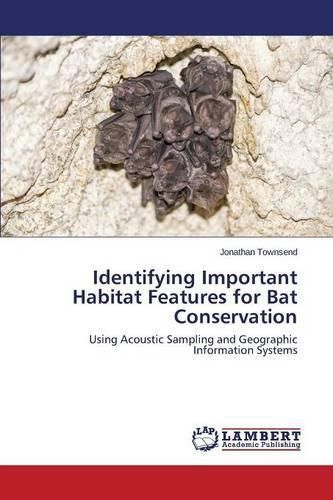Readings Newsletter
Become a Readings Member to make your shopping experience even easier.
Sign in or sign up for free!
You’re not far away from qualifying for FREE standard shipping within Australia
You’ve qualified for FREE standard shipping within Australia
The cart is loading…






This title is printed to order. This book may have been self-published. If so, we cannot guarantee the quality of the content. In the main most books will have gone through the editing process however some may not. We therefore suggest that you be aware of this before ordering this book. If in doubt check either the author or publisher’s details as we are unable to accept any returns unless they are faulty. Please contact us if you have any questions.
Bat populations worldwide have been under pressure for decades due to habitat loss, pollution and disease. Recently, a fungus causing White Nose Syndrome has killed millions of bats in the United States. In order to improve bat conservation efforts, mobile ultrasonic surveys were conducted along two transects in Chautauqua County, NY during the summer of 2013. Surveys began 30 minutes after sunset on nights where the temperature was > 13 degrees Celsius, and were driven between 29 - 32 kmph. Twenty surveys were completed, and 1248 bats were identified to species. Loglinear analysis revealed a significant relationship between bat calling activity and forested habitats, specifically for big brown, silver haired, eastern red, and hoary bats. Wetland, stream, residential habitats and elevation were also shown to have a significant relationship with calling activity. This study supports the hypothesis that bats vary foraging behavior at the species level, and indicates the importance of forested habitats to bats. Additionally, the methodology for this study has the potential to gather large data sets in a short period of time, while simultaneously collecting data on multiple species.
$9.00 standard shipping within Australia
FREE standard shipping within Australia for orders over $100.00
Express & International shipping calculated at checkout
This title is printed to order. This book may have been self-published. If so, we cannot guarantee the quality of the content. In the main most books will have gone through the editing process however some may not. We therefore suggest that you be aware of this before ordering this book. If in doubt check either the author or publisher’s details as we are unable to accept any returns unless they are faulty. Please contact us if you have any questions.
Bat populations worldwide have been under pressure for decades due to habitat loss, pollution and disease. Recently, a fungus causing White Nose Syndrome has killed millions of bats in the United States. In order to improve bat conservation efforts, mobile ultrasonic surveys were conducted along two transects in Chautauqua County, NY during the summer of 2013. Surveys began 30 minutes after sunset on nights where the temperature was > 13 degrees Celsius, and were driven between 29 - 32 kmph. Twenty surveys were completed, and 1248 bats were identified to species. Loglinear analysis revealed a significant relationship between bat calling activity and forested habitats, specifically for big brown, silver haired, eastern red, and hoary bats. Wetland, stream, residential habitats and elevation were also shown to have a significant relationship with calling activity. This study supports the hypothesis that bats vary foraging behavior at the species level, and indicates the importance of forested habitats to bats. Additionally, the methodology for this study has the potential to gather large data sets in a short period of time, while simultaneously collecting data on multiple species.